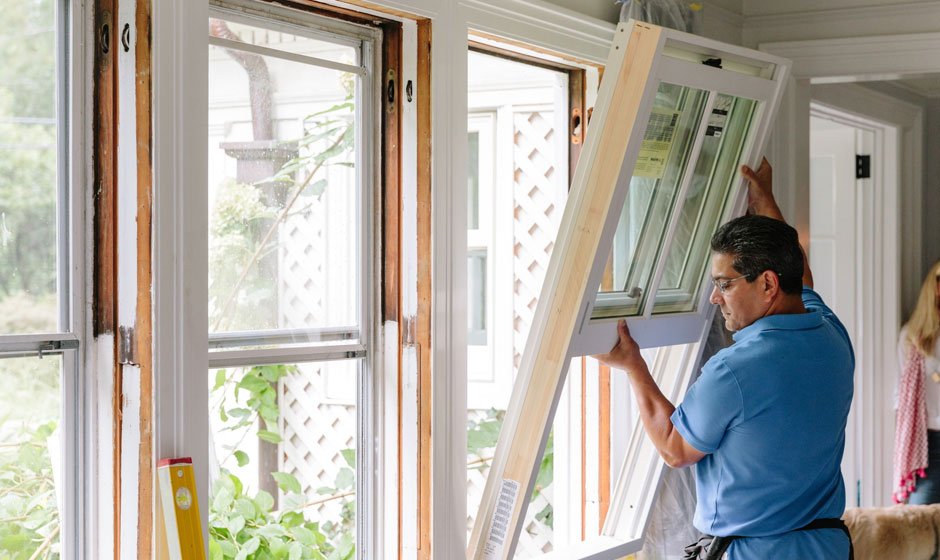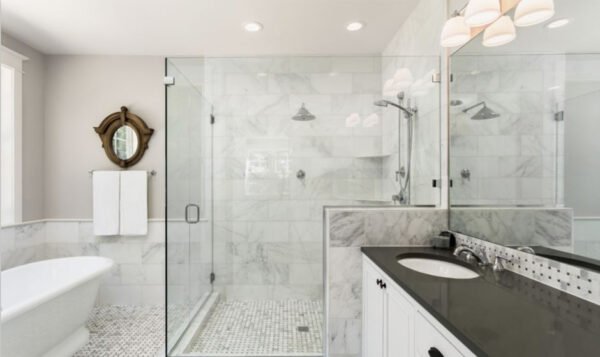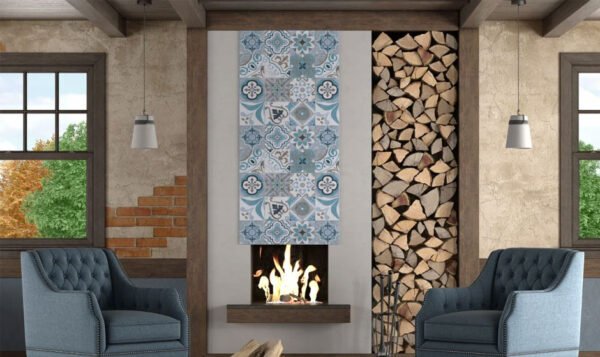Window Replacement Can Be a Messy Job

Window replacement can be an inconvenient and complicated task that leaves your house looking like Swiss cheese – creating an opportunity for weather, birds or animals to enter.
Discuss with your contractor a plan for removing old windows and how best to protect the interior of your home during this process. Also find out about their weather policy.
Once the contractor understands the scope of work/steps involved, Calgary homeowners can begin the process of window replacement in 5 steps: preparation, removal, fabrication, installation and clean-up.
Frame
Window frames serve many functions for both glass and structure support, as well as insulation purposes in your house. Loose window frames may rattle when windy conditions come about or shake when shut, as well as allow air leaks that make your home hot in summer and cold in winter.
Wood frames may rot if left without regular painting or re-staining, as well as require frequent cleaning to guard against moisture which can rot them further. Wooden frames typically cost more to repair and maintain than other options.
Aluminum frames require little maintenance and can withstand environmental hazards well. But due to changing temperatures, aluminum can expand and twist with it, compromising water resistance and insulation properties and often leading to fogging between windows – an indication that sealant has broken. Vinyl is another popular frame material – it is easy to keep clean but over time temperature fluctuations cause cracking that needs regular re-caulking.
Glass
Shopping for new windows requires many decisions and details. Working with an experienced window retailer and contractor will make the experience much more pleasant; they’ll offer guidance so you get something you will be pleased with for years.
Muntins and Mullions
Old homes typically feature wood muntins or mullions to separate the panes of glass from one another and to provide support, whether purely decorative or otherwise. When these muntins or mullions become dented, chipped, or scratched it may be possible to repair them rather than having to replace the entire window.
Work with a high-rise window maintenance team who understand how to care for historic windows properly. By having regular checks on them, this will protect their structural integrity while reducing energy losses caused by air infiltration between frames and sash windows, plus reduce energy loss through air infiltration caused by air infiltration around frames and sashes. Regular inspections allow you to address caulking/weatherstripping issues which contribute to energy savings.
Sash
Preservationists and energy nerds often argue over whether old single-pane, divided-lite window sashes should be repaired or replaced altogether. The answer ultimately rests with your budget and restoration goals; each decision depends on multiple variables.
Wood windows may swell and shrink over time due to moisture changes, leading to their sash becoming stuck or jammed in their frame and decreasing energy efficiency. This can have serious negative consequences.
Maintain your windows regularly to identify signs of moisture damage. Look out for signs like water stains or soft wood that feels soft or spongy under pressure; this could indicate moisture-induced damage, and replacement might be necessary. When it comes time to change out your windows for good, consider upgrading to double-hung or casement models for greater energy efficiency and durability.
Weatherproofing
Replacing older windows that have broken glass, frame damage or rot can help lower energy costs and enhance comfort levels in your home. As older windows may not adequately insulate or block noise, replacing them with new energy efficient ones is a worthwhile investment.
Window manufacturers typically provide several price tiers for their replacement windows, with upgrades including better frames and longer warranties available at each tier. You could save money by purchasing multiple windows from one brand at once in order to take advantage of volume discounts or special offers.
Installation can have a substantial effect on your window replacement cost. Full-frame installations typically involve removing both existing windows and interior and exterior trim; as such they tend to be more costly. Some companies like Renewal by Andersen offer white-glove services which include placing drop cloths to avoid tracking in dirt as well as handling sealants and insulation with great precision for optimal results.
Generally speaking, Calgary window replacement prices vary depending on the type of windows chosen as well as the complexities of installation or other customizations. It’s crucial to use durable materials with solid warranties, especially in the long run. It’s crucial to have a realistic budget in mind for the materials and labor needed when considering window replacements for your Calgary home.



